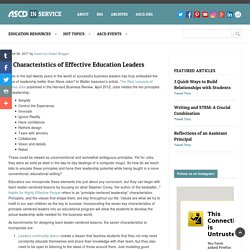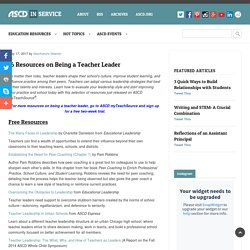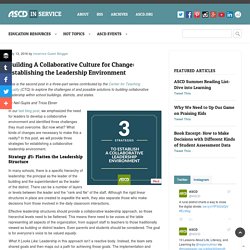

Collective Teacher Efficacy. Collective Teacher Efficacy: A team of individuals sharing the belief that through their unified efforts they can overcome challenges and produce intended results.

Effect size: 1.57 For all the non-scientists out there, that means Collective Teacher Efficacy is the number one factor influencing student achievement! That’s twice the effect size of feedback and three times the effect size of socio-economic status. Take a look at Factors Influencing Student Achievement and Their Effect Size. John Hattie’s research on the impact of various educational practices that influence student achievement has been transformative for the educational system, helping to focus on the most effective interventions and in turn increasing achievement for students. What are the critical components of Collective Teacher Efficacy that must be established in order to transform a school from simply fulfilling instructional compliance to engaging in evidence-based, highly effective, instruction? Cohesion. ShadowCon 2016 - Empower - Robert Kaplinsky. Our 10 Best Articles of 2018. MobilePagedReplica. Education Week. (This is the first post in a two-part series) The new "question-of-the-week" is: What is an important article or blog post, that is still freely available online, that you read and has had a big impact on your teaching?

We teachers tend to read a lot and, for all that reading, there are typically tons of other books and articles that we want to get to but just don't have the time. This series will explore what articles educators have read that they feel impacted their teaching. Maybe we'll find good pieces for us to put on our priority reading list! Today, Jessica Torres, Kathleen Neagle Sokolowski, Robert Ward, Lisa Eickholdt and Kathy Dyer contribute their suggestions. Even though the question relates to articles, I'm going to make a video as my own suggestion. Response From Jessica Torres Jessica Torres is a first year elementary assistant principal at Brook Avenue Elementary school in Waco, Texas. Becoming an assistant/vice principal is a big leap for most individuals. 1. 2. 3. 4. 5.
Outstanding in Your Field: What It Takes to Be a Great Teacher. Steven Covey wrote a book, The 8th Habit: From Effectiveness to Greatness, to help organizations and individuals find their own voices.

Covey describes voice as the internal drive to face challenges and rise to overcome them. He explains that each of us has a voice that lies at the central confluence of talent, need, passion, and conscience. The premise of the book was that if you didn't find your own unique significance (voice), neither you nor your organization would be able to achieve greatness. After I read this book, I considered the word "greatness" for a long time. Of course, being an incessant analyzer, I asked myself this question, "What does greatness mean in education? " 7 Characteristics of Effective Education Leaders. Who in the last twenty years in the world of successful business leaders has truly embodied the idea of leadership better than Steve Jobs?

In Walter Isaacson’s article, The Real Lessons of Steve Jobs published in the Harvard Business Review, April 2012, Jobs relates the ten principles of leadership: SimplifyControl the ExperienceInnovateIgnore RealityHave confidenceRethink designTeam with winnersCollaborateVision and detailsRebel These could be viewed as unconventional and somewhat ambiguous principles. The Pros and Cons of Transparent Leadership. If I ever write a book, I think I’m going to title it “The Fallacy of Transparent Leadership”.

You hear about being a transparent leader, and read article after article about the need for transparent leadership, but I am here to tell you, there’s a right way and a wrong way to go about it! I have learned that as a principal my position precedes me as a person. Everything I say or do is seen through the lens of being the principal the boss, the big scary evaluator, versus coming from Amber, the girl who still occasionally trips coming down the stairs. Every thought I share or quip I make carries more weight than if I was a stranger or just a peer. This was an interesting lesson to learn, but literally have used that learning experience to manage our climate & culture so much more effectively.
16 Resources on Being a Teacher Leader. No matter their roles, teacher leaders shape their school’s culture, improve student learning, and influence practice among their peers.

Teachers can adopt various leadership strategies that best fit their talents and interests. Learn how to evaluate your leadership style and start improving your practice and school today with this selection of resources just released on ASCD myTeachSource®. Communications Tips for School Leaders. Building A Collaborative Culture for Change: Establishing the Leadership Environment. This is the second post in a three-part series contributed by the Center for Teaching Quality (CTQ) to explore the challenges of and possible solutions to building collaborative leadership within school buildings, districts, and states.

By Neil Gupta and Tricia Ebner In our last blog post, we emphasized the need for leaders to develop a collaborative environment and identified three challenges they must overcome. [3963] Self-Confidence Matters: "I Determine School (Student) Success. Services – TeachThought PD.